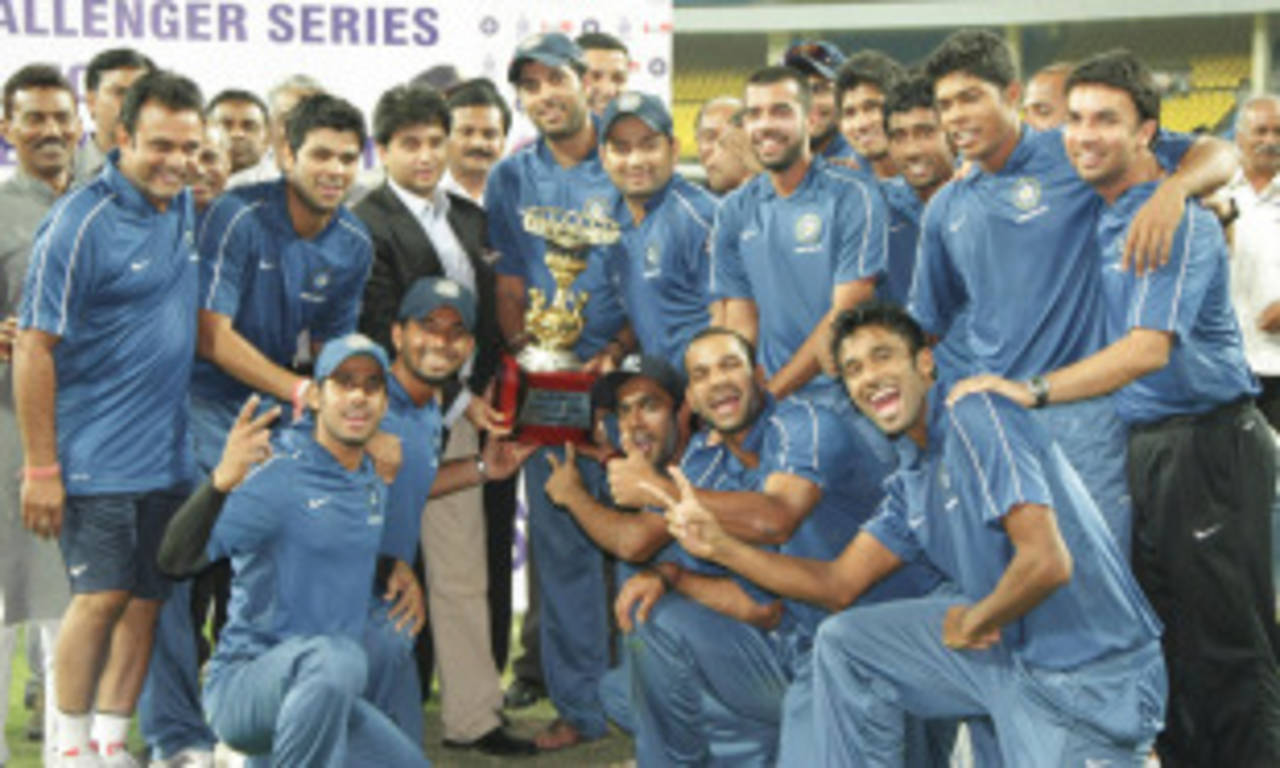At last, some light at the end of what seemed an interminable tunnel. India's domestic cricket, as contemporary as the long-playing record and as effective as a coalition government, is letting itself
change a bit. It was doing India's cricket no good at all, and while you could still do a bit of nitpicking with what this committee has come up with, the intent is admirable, and it will be disappointing if the changes are not accepted immediately.
As readers of this column may be aware, I have
argued that the ideal number of teams in the Ranji Trophy is 12. Playing 27 teams entails diluting quality far too much. India's domestic cricket has long been irrelevant and uncompetitive, and at last that has been accepted. No change can begin unless there is an acceptance that the present system is ineffective.
We still have 27 teams (the political reality, as we see every day, often comes in the way of a greater good) but the marginal teams, those that bring the overall standard down, will now be marginalised further with the suggestion that you have three divisions of nine teams each. It might be harsh on them but if promotion to a higher group isn't an incentive, maybe they shouldn't be playing anyway.
There is an attempt to make each match competitive by allowing the top three in each of the first two groups to play the knockouts and the bottom two to go down. This is especially true of level two, where you could finish outside the top two, and therefore not be promoted, but still have the opportunity of playing the knockouts. And there is an opportunity for level three teams, with the top two allowed into the quarter-finals.
You could say that having two teams from the bottom nine will dilute the level of the knockout stage, but it could be just the reward for a team with ambition - as we saw with Rajasthan a couple of years ago. And even a team that finishes fourth in level one will have played eight first-class games, which is a couple short of ideal but better than how it is now.
The perfect follow-up to this would have been a respectful burial for the Duleep Trophy. When you are playing enough first-class games for your state side, there is nothing to be gained from the Duleep Trophy. Worse still, it promotes individual play, as that other irrelevant tournament, the Challenger, does too. Any tournament that has as its objective the promotion of individual effort and does nothing to promote a team ethic has to be scrapped, and so, while the Duleep Trophy honours one of our greats, it actually harms our cricket.
Any tournament that has as its objective the promotion of individual effort and does nothing to promote a team ethic has to be scrapped, and so, while the Duleep Trophy honours one of our greats, it actually harms our cricket
So does the Challenger. By allowing the winner of the Vijay Hazare Trophy to be one of the three teams involved, that is lessened marginally, but it is still an unnecessary tournament. Sometimes a body gets healthier by removing toxins. If you want domestic cricket to produce hardened team players, you cannot have events where players are just distributed around. Playing for two teams, a state team and the national team, should be good enough.
By allowing two bouncers an over in limited-overs cricket, this committee is testing batsmen a bit more and aligning rules to international limited-overs cricket, which is how it should be. It has also shown a desire to innovate by allowing one bowler 12 overs and keeping the others down to a maximum of ten. It will be interesting to see how captains play this, because, as with the Supersub, sometimes good ideas can be rendered ineffective by poor use by captains.
And right at the bottom of the pyramid comes a very interesting change. The Under-22 tournament as we knew it will no longer exist and will be replaced by the state A team, which can take players upto 25. For too long India's cricket has been obsessed with age, and that, as everyone knows, is an invitation to produce imaginative dates of birth. Many years ago the South Zone had a tournament everyone called the Junior State (the P Ramchandra Rao Trophy). You could play in it till you were 25, but not after you had made your Ranji Trophy debut. In essence it was an opportunity to look at players at a level higher than the top city league. It worked really well then, and I often wondered why the idea wasn't implemented elsewhere. Now it is going to be, but with teams allowed to play three Ranji Trophy players. I think it works well without the three, but I can see how having them is an attempt not just to make it more competitive but also to allow out-of-form state players to make a comeback. In the overall revamp it might seem like a small thing, but it shows an attention to detail that is heartwarming.
Maybe we need to look at this as Reforms 1.0, to be followed soon enough - no later than a year - by Reforms 2.0. There is room for other reforms too, especially to do with pitches; accounting in national and, especially, state bodies; and the remuneration structure for Test cricket, which should be at the heart of retaining that form of the game.
Ah, and one other thing. You put good people in good positions and you get good results.
Harsha Bhogle is a commentator, television presenter and writer. His Twitter feed is here
